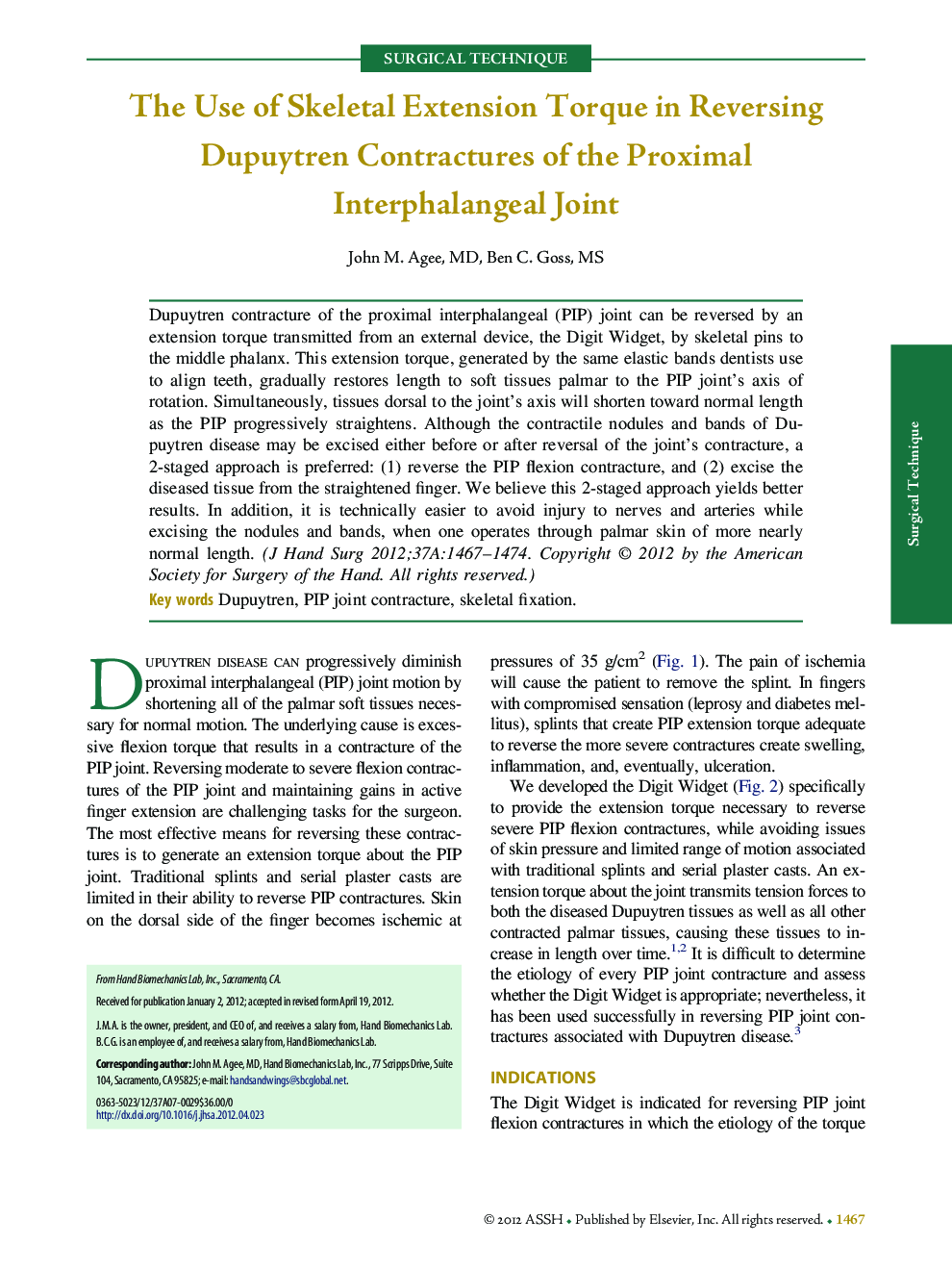| Article ID | Journal | Published Year | Pages | File Type |
|---|---|---|---|---|
| 4068418 | The Journal of Hand Surgery | 2012 | 8 Pages |
Dupuytren contracture of the proximal interphalangeal (PIP) joint can be reversed by an extension torque transmitted from an external device, the Digit Widget, by skeletal pins to the middle phalanx. This extension torque, generated by the same elastic bands dentists use to align teeth, gradually restores length to soft tissues palmar to the PIP joint's axis of rotation. Simultaneously, tissues dorsal to the joint's axis will shorten toward normal length as the PIP progressively straightens. Although the contractile nodules and bands of Dupuytren disease may be excised either before or after reversal of the joint's contracture, a 2-staged approach is preferred: (1) reverse the PIP flexion contracture, and (2) excise the diseased tissue from the straightened finger. We believe this 2-staged approach yields better results. In addition, it is technically easier to avoid injury to nerves and arteries while excising the nodules and bands, when one operates through palmar skin of more nearly normal length.
